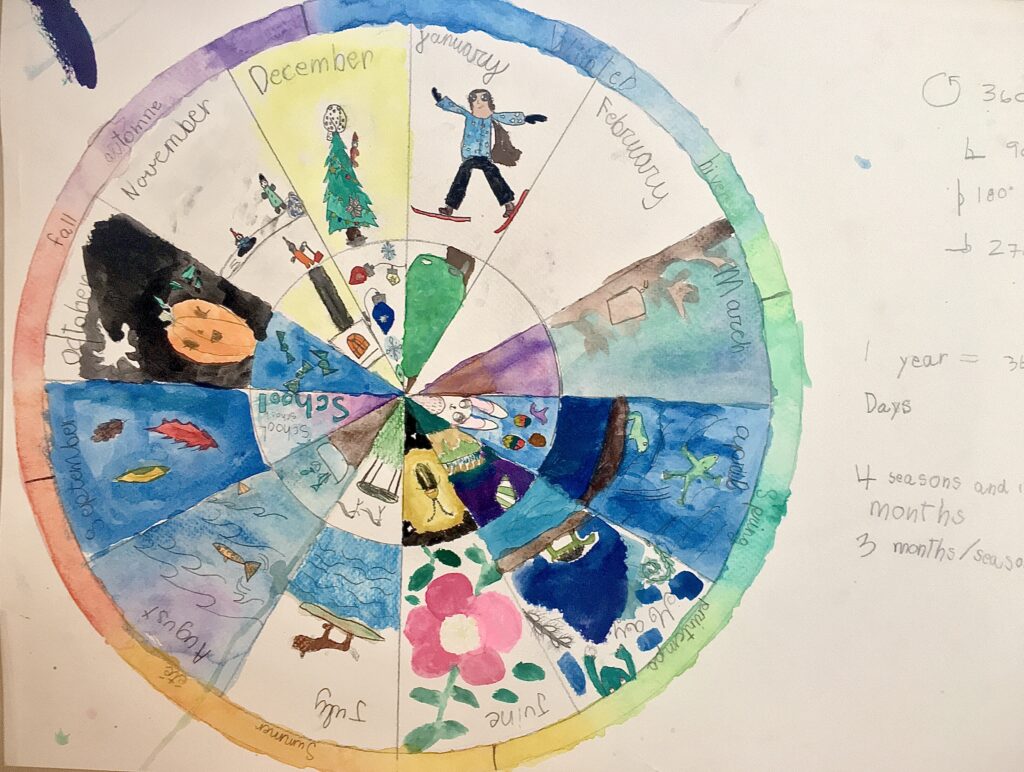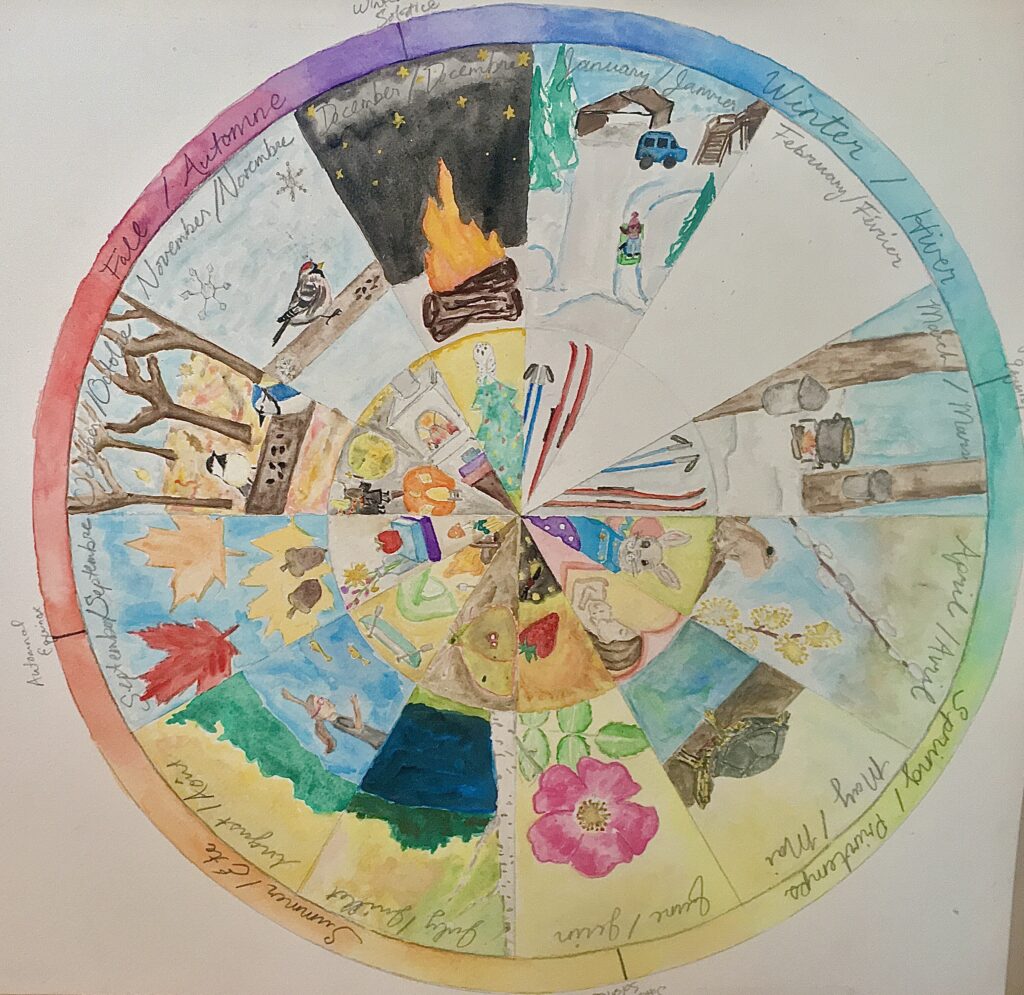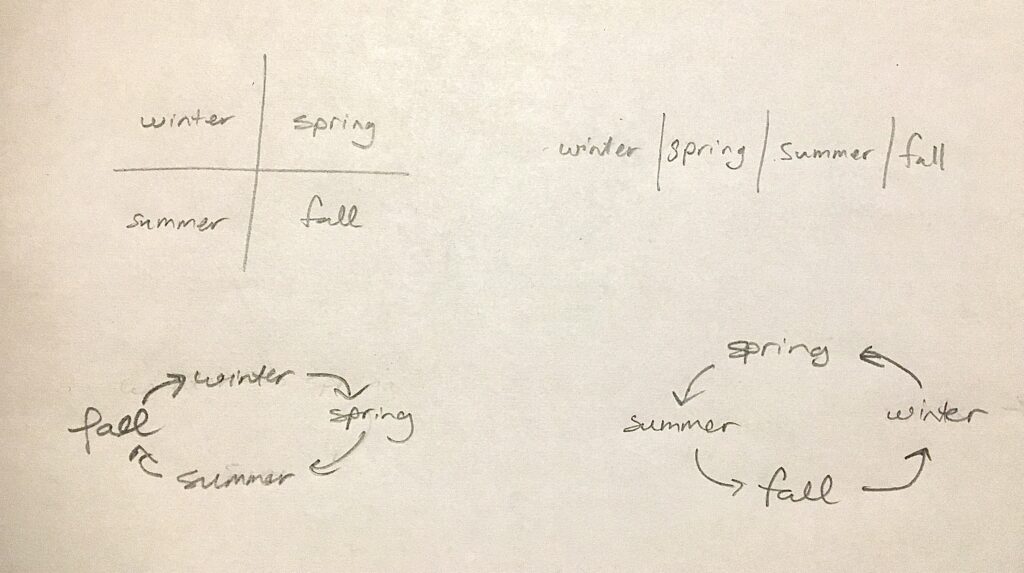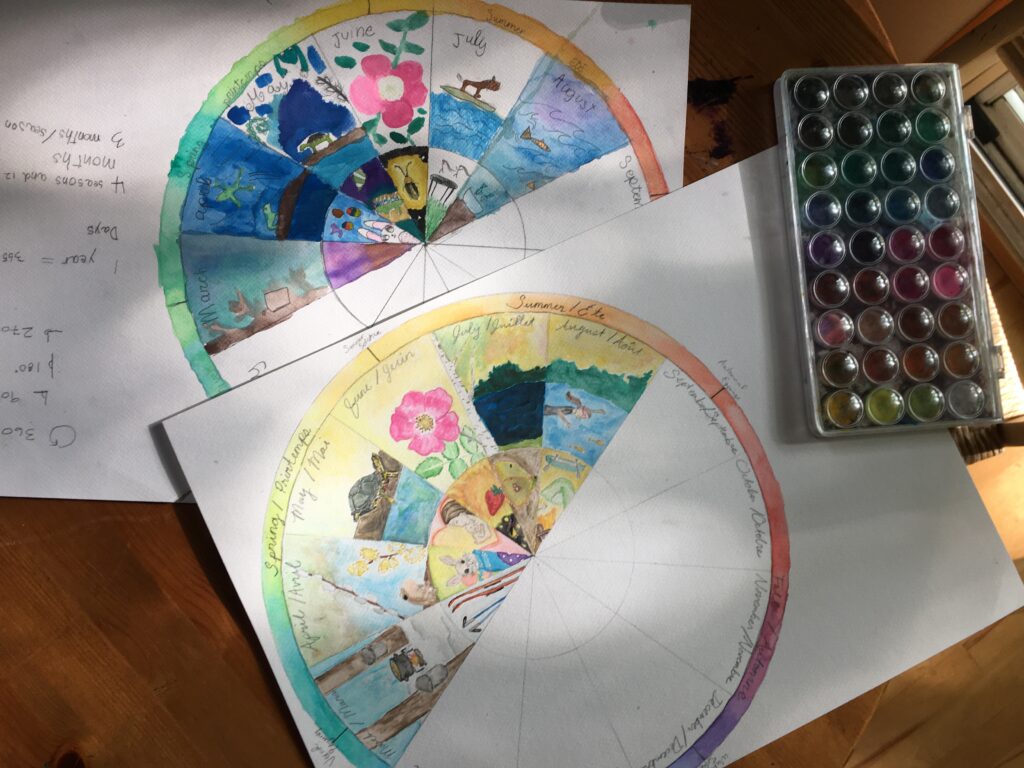

Whoa. It’s been almost a full year, a full orbit around the Sun, since a microscopic virus took on the human world. Schools closed and we began homeschooling. Schools opened and we continued homeschooling because my daughter had a skip in her step. She asked to continue and I was able to. I am beyond grateful to have had this year to be closer to my daughter, and to learn with her closer to nature. It was like a reset and reconnection in many ways. It felt more like her beautifully-slow early years of discovery, before she went to school and my return to work. It was a chance to step off the busy, constantly turning wheel of getting to point A and then point B and so on; a chance to get out of the four-walled classroom and to tune into a more meaningful wheel – the wheel of nature as we circle our life-giving Sun. And it is so comforting and healing to slow down and be held by nature. One thing I was clear on when we started homeschool is that I wanted it to be joyful, meaningful and inspiring, and also comforting and healing given the times. And the beauty of the turning of the seasons offers all of that. I knew we would relish in nature and create a lot of art.
A phenology wheel was one of the first projects we began. Phenology is the study of seasonal, natural events like when the sugar maple sap is flowing, when the catkins appear on the willows, when the painted turtles first appear basking in the sun, and so on. A phenology wheel is a good ongoing project to foster presence and an appreciation for each month and season. At the end of each month, we reflected on what we had observed nature doing and what we had gotten up to, and then we drew and painted. Sometimes, we looked back at what we had drawn months ago to be reminded of some nice memories. We began by drawing something that we observed in nature in the larger portion, and something more cultural or human-related that we did in the smaller portion, but sometimes we just drew whatever we felt like.
I like this project because it can also help to foster a cyclical way of thinking about and of feeling our connection to nature. Our minds have been trained by our largely-separated from nature society and the way we read, to thinking linearly and from left to right, but the natural world doesn’t work like that.
You can see in our approach to our phenology wheels that we were trapped in the forward-flowing, left-to-right, clockwise mentality. For the next year, we may challenge our way of thinking and draw the flow of the months in a counterclockwise order. Afterall, we orbit the Sun in a counterclockwise motion.
Now, there is a mind-bend;) Think about how you would draw the seasons, what it teaches, and how it informs your world-view….

Drawing the wheel involves quite a bit of math and is a good exercise. But if doing so is a barrier to actually doing the project because of time or level, you can print a free, blank phenology wheel in English or French, and begin right away.
Phenology wheel projects can be done in the classroom or home, and can integrate many subject areas…
Science: an understanding of the months and seasons, and of what causes the seasons – Earth’s tilt and orbit around the Sun, the Sun being the principal source of energy for Earth, the Sun as a source of energy in both heat and light, weather and temperature, nature observation, plant & animal understanding (needs & characteristics, growth & change), understanding what a cycle is (a circular sequence of events)
Art: colour theory, creation – drawing and painting, elements and principles of design to communicate meaning or understanding
Language: developing vocabulary – spelling the names of the months, seasons, solstices and equinoxes (could be done in a second language)
Social Studies: if you celebrate particular events in the wheel of the year, understanding of your local community (e.g., when do farmers sell certain products at the farmers market), different worldviews if you discuss the concepts of linear versus cyclical worldviews and concept of time
Math: if you discuss concepts such as diameter, radius, the number of degrees in a circle, how to divide a circle into 12 equal parts, fractions, how to use a protractor, angles, the number of days in a year etc.
There are probably other curricula connections, but that is what comes to mind. Let me know if you think of any. The science fits particularly well with the Ontario Grade 1 Science Curricula, but I think it is a good project for a wide range of ages – I enjoyed it as an adult as well.
I was required by the Québec government to describe my education approach (and to submit a learning plan, a mid-term and status report, a completion report, an evaluated portfolio etc. etc.), and it was fine as I have a B.Ed. (and a B.Sc. and M.Sc.), and have thought and written about my education philosophy before. But I understand how intimidating the curriculum documents and the forming of a learning plan must be for many parents. In case it gives someone out there some help in thinking about their own education approach, this is what I wrote:
I believe an early primary education should be joyful and inspiring. I will educate the whole child and there will be an emphasis on time spent in nature, creating art, and fostering the imagination, an appreciation of beauty, curiousity, and a love of learning. My education approach will include a combination of emergent, integrated, bioregional, nature-based, outdoor, experiential, thematic and project-based learning. With an emergent curriculum I will respond to my daughter’s interests and what is happening in nature and the community around us, in order to capitalize on her intrinsic motivations and to give meaning and connection to her learning.
And so, it has been almost a year and as I am writing this, I can hear a chickadee singing it’s “Hey, sweetie” song and spring is in the air. But oh, no rush – that is the nice thing.
More about nature observation calendars to come.

Wishing you all health and happiness, and a life connected to beauty, joy and nature,
Kate
The supplies we used (along with pencils, erasers, a ruler, a protractor, and some paper towel):
